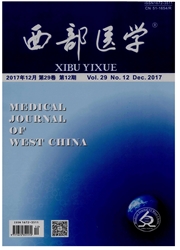

 中文摘要:
中文摘要:
目的以APOE基因缺陷小鼠为基础建立糖尿病模型,观察其动脉硬化和蛋白表达的特点,从而揭示对雷帕霉素抵抗的分子机制。方法将雄性APOE-/-小鼠16只随机分为对照组和糖尿病组,糖尿病组给予腹腔注射STZ制备糖尿病模型,检测小鼠体重、血糖、血脂,8周后取材行主动脉根部切片,HE染色对比两组主动脉根部斑块面积,行免疫组化对比粥样斑块中mTOR表达情况,用western-blot方法测定主动脉mTOR表达情况。结果糖尿病组体重较对照组有显著下降(P〈0.01),血糖血脂显著升高(P〈0.01),主动脉根部斑块面积增大(P〈0.01),斑块内mTOR表达下降(P〈0.05),主动脉内mTOR表达下降(P〈0.01)。结论糖尿病导致粥样斑块增加,斑块内及主动脉内mTOR表达下降,这可能是糖尿病雷帕霉素抵抗的分子机制之一。
 英文摘要:
英文摘要:
Objective On the basis of the APOE gene defect mouse diabetes model,the hardening of the arteries and the characteristics of protein expression was observed to reveal the molecular mechanisms of rapamycin resistance.Methods 16 male APOE-/-mice were randomly divided into control group and diabetes group.The diabetes group was given intraperitoneal injection of STZ.The body weight,blood glucose,blood lipid,aortic root out line section and plaque area were observed.The mTOR expression of aortic root lines and atheromatous plaque were detected.Results The weight of diabetes group decreased more significantly than that of the control group(P〈0.01).The blood sugar,blood fat and plaque area of diabetes group increased more significantly than that of the control group(P〈0.01).The mTOR expression of the aortic root of diabetes group increased compared with that of the control group(P〈0.01).The mTOR expression of plaque of diabetes group decreased compared with that of the control group(P〈0.01).Conclusion Diabetes increases atheromatous plaque,the plaque inside and intraaortic mTOR expression.This may be one of the molecular mechanisms of rapamycin resistance to diabetes.
 同期刊论文项目
同期刊论文项目
 同项目期刊论文
同项目期刊论文
 Transgenic over-expression of transient receptor potential vanilloid subtype1 attenuates isoproteren
Transgenic over-expression of transient receptor potential vanilloid subtype1 attenuates isoproteren Activation of TRPV1 accelerates reendothelialization and inhibitsneointimal formation following vasc
Activation of TRPV1 accelerates reendothelialization and inhibitsneointimal formation following vasc Dietary capsaicin ameliorates pressure overload-induced cardiac hypertrophy and fibrosis through the
Dietary capsaicin ameliorates pressure overload-induced cardiac hypertrophy and fibrosis through the TNF-α inhibitor protects against myocardial ischemia/reperfusion injury via Notch1-mediated suppress
TNF-α inhibitor protects against myocardial ischemia/reperfusion injury via Notch1-mediated suppress 期刊信息
期刊信息
